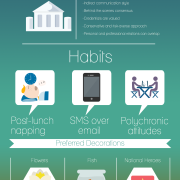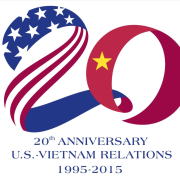Feedback Loops
If you’ve ever been traveling through Vietnam, then one aspect that is noticeably different between the north and the south is the customer service. For example, when ordering a bottle of beer at a restaurant, the server will usually open it for customers in the south—while in the north, the server might not even bring a bottle opener with the bottle. A few weeks ago, over dinner with some Saigonese friends in Hanoi, the discussion touched upon the better customer service in the south. Not even two minutes later, the waitress (politely) informed us that she felt she was walking around our table too much so we should consolidate our future requests for her convenience. On another occasion, at a cafe/restaurant frequented by tourists in Hanoi’s Hoan Kiem district, your author requested ice water; the waitress brought over cold water sans ice. After inquiring about the lack of ice in the glass, the waitress cheerfully responded, “I think the water is cold enough for you.”
Among the major reasons why customer service (among other things) does not change is simply that customers are used to bad service (they don’t know better), they don’t complain to someone who can do something about it (a manager or owner), they don’t want to complain (for fear of causing trouble for the worker), or they assume it will be futile to complain. This issue consistently rears its ugly head (for tourists, but also for locals) with taxi drivers who know “special” ways to get to the destination, pretend to get lost, or simply don’t know how to get to the destination. Usually, these drivers are from the countryside who flock to big cities after a holiday. Sometimes, taxi drivers will acknowledge where a fare wants to go and will then proceed to “phone a friend” for guidance (and sometimes more than once). At other times, drivers may try to take advantage of the confusion over the local currency by returning less change to a customer than required. Or a driver might not even want to drive to a particular destination if it is “too close” or won’t provide for a “high-enough” fare. (Before Tet in Hanoi, your author experienced some taxi drivers bypassing the meter and establishing “on-demand” pricing.)
However, with the arrival of sharing economy services in Vietnam such as Uber, GrabTaxi, EasyTaxi, they introduce more accountability, systems efficiencies, and feedback loops to allow service enhancements in the future. Or, as Uber Vietnam put it recently, “less congestion, more job opportunities, safer transportation, transparency, accountability and affordability for riders.” Could a similar impact be made in Vietnamese companies via new and innovative technologies (such as mobile apps)? If so, how would progress be measured?
Set Ways
For a team-building session at a major Vietnamese corporation, the management team watches a new TED talk every Monday. The company’s managing director shares some thoughts on the presentation and then opens it up to the rest of the office; almost always, the response is silence. Why?
After discussion with some foreigners who have experience working with Vietnamese—as well as Vietnamese, there may be a variety of reasons for the lack of engagement:
1. Afraid of giving the wrong answer and losing face;
2. Afraid of not giving the “right” answer and being embarrassed by his/her superior;
3. Afraid of giving the correct answer and looking “too” good in front of colleagues (thus painting a bullseye on his/her back); and
4. Not knowing the answer.
This scene presents a sort of “crisis of confidence.” Often, loyalty is valued over competency, making the critical resource of talent in even greater short of supply. And despite money being the ultimate objective for many Vietnamese workers, even bonus systems can sometimes fail. For example, in one Vietnamese company, the underdog team achieved a bonus (approximately $15 for hitting 120% of their target goal) which upset the atmosphere in the office since other units were expecting to win the cash bonus.
Whether it’s a rating system, or a new way to train workers, or standard training, many plans are tough to fully implement in Vietnam. For example, even a new trainer in a reputable gym requires six months before s/he is “good” and a year before s/he can handle any disruption. Long before then, competitors are offering “sweet” packages because the trainer has had a “brand experience.” The same goes for some of Vietnam’s own cafe/restaurant brands; this phenomenon isn’t new—ask any aspiring software developer in Vietnam, especially in the gaming industry. Training and retaining quality employees can be hard (especially when some Vietnamese companies want experienced workers for low pay), but the alternative is keeping the status quo.
Focused Efforts
The greater issue beyond motivating individual employees is that organizations need to establish a baseline pulse to gauge progress in six, 12, 18, 24 months. For example, what KPIs will be used? What will be your targets? How to increase the self-confidence of the workers? How to smartly increase pay to be on par with market rates (and inflation)?
Timeline: What’s the priority? How to identify current employees with the right mindset/attitude? What do you do first?
There can be a variety of initiatives:
- Hiring process—establish an independent panel/screening to be selective—improving the way to hire
- HR reorganization/operations—converging departments into a holistic unit
- Branding/PR—attracting quality talent, connecting with consumers
- Training programs—preparing the workforce for advancement in the company (meritocracy); promoting a culture of career advancement; and english tutoring components for managers
- Intrapreneurship/empowerment of workers—expanding into new businesses and retaining the best talent
- Welfare—raising morale, giving workers more than monetary reasons to stay
Unfortunately, some Vietnamese companies would prefer “quick fixes” which they would like to use within a three month timeline or sooner. Thus, even if core members of a leaderboard recognize that there is a deep cultural issue, they may not be able to do anything because of on-boarding policies and the need to close ranks (even if they describe some of the talent as “terrible.”)
More often than not, companies here can move too slowly, but on the other side of the spectrum they move too fast without thinking (but believe they are on the cutting edge). An example of this is retooling restaurants weeks before opening and consolidating marketing teams across different subsidiaries into a single unit–and then dismissing half the staff.
Creating a New Culture
The challenge is in the implementation, always. True transformation is never really an option unless it comes from the top and has buy-in at all levels, which is rarely the case. Why? Because Vietnamese companies are already very thrifty, there are set alliances in place, and any international hires on staff have usually been unable to implement recommendations that anyone has put forth to enact change.
Then, what should be done? There are a few options:
1. Organizational change
2. Physical building transformation (if necessary)
3. Team-building
Competition is increasing in ASEAN and around the world; what role will Vietnam and its people take on in the global economy in this century? It’s up to the Vietnamese to decide but for sure it will require a combination of innovation, commitment, and investment in areas even as simple as:
- Empowering workers
- Eliminating obfuscation
- Enacting small cultural changes
- Eradicating fear-based management
But perhaps most important of all is to establish feedback loops, which allows us to gauge goal realization (or lack thereof) in organizations (and in society). Ultimately, feedback loops allow what works to take off, and what is ineffective to be passed over by management.









